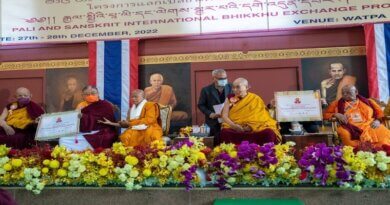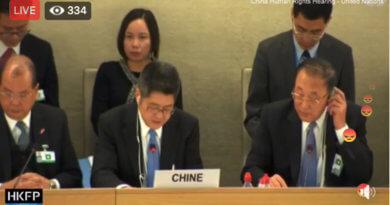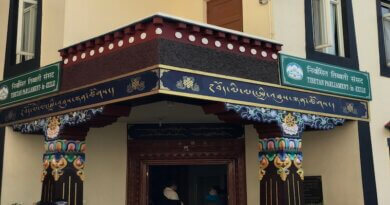Satellite data indicate harsher imprisonment for Tibetans in China’s detention facilities in occupied Tibet

By Yungdung Tsomo
DHARAMSALA, 29 July: The pattern of increased usage of night-time lighting and activities across detention facilities in Tibet by the Chinese authorities indicates harsher imprisonment faced by the Tibetans, a research institute has concluded.
The Rand Europe research institute has measured night-time lighting data using a satellite-based sensor and noticed a significant use of light at a specific time of the night which they interpreted as usage and occupancy of the facilities without physical expansion, suggesting a potential rise in harsher imprisonments by Chinese authorities.
The report by the not-for-profit research institute whose mission is to help improve policy and decision-making through research and analysis added that “These data can help illuminate potential changes in the construction, growth, or decline in the use of specific detention facilities across Tibet that may not be visible using overhead satellite imagery alone.”
The report titled ‘A night-time lighting analysis of Tibet’s prisons and detention centres’ said that there are 79 prisons and detention centres across Tibet, of which 14 prisons are high profile and the rest of them are low-level detention facilities used for short-term imprisonment.
Labelling Tibet as an “information black hole” the report maintained that far less information flows out of Tibet as compared to other targeted regions such as East Turkistan.
Declaring that the “Tibetan detention system is still very much a black hole to the international community,” the report added, “the increased activity probably indicates a shift towards longer detentions.”
Tenzin Cheokyi, a senior researcher from UK-based Tibet Watch has told The Guardian that it was impossible to know what was going on inside detention centres and added that changes in the pattern of night-time lighting coincided with the pandemic.
She further highlighted the “steady decline in media coverage of Tibet in the last decade” that she says was aggravated by the “travel bans and punishment of pilgrims crossing the border to India, and a pattern of reprisals and increased surveillance against entire communities for acts by individual activists.”
Chinese authorities in Tibet are performing “preventive repression” towards the Tibetans on the pretext of a nationwide stability maintenance strategy, Tibetan are subjected to various denials of fundamental human rights.
Tibetan intellectuals, religious figures, and language and climate activists are mostly targeted and sentenced to prison on vague charges of “endangering state security” and ‘separatist’ among others by the Chinese authorities to suppress their dissent voices.
The institute has concluded that the “precise workings, nature and scale of the Chinese Communist Party’s efforts to imprison and detain Tibetans, however, remain poorly understood.”
Earlier this year, three independent UN human rights experts raised concerns over the one million Tibetan children being separated from their families and placed in Chinese state-run boarding schools to assimilate them into the domain of Han culture.






